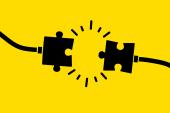CRT With His-Purkinje Conduction System Pacing Succeeds in Pilot RCT
LVEF gain was greater than with biventricular pacing, but these pilot findings require confirmation. A larger trial is underway.

For patients with heart failure, a reduced ejection fraction, and an indication for cardiac resynchronization therapy (CRT), using His-Purkinje conduction system pacing (HPCSP) is safe and feasible and provides a bigger boost to LV function than does using biventricular pacing, according to the pilot HOT-CRT study.
After 6 months, patients treated with HPCSP had a mean increase in LVEF of 12.4%, significantly higher than the 8.0% seen with biventricular pacing (P = 0.02). There were also fewer adverse events and crossovers, Pugazhendhi Vijayaraman, MD (Geisinger Wyoming Valley Medical Center, Wilkes-Barre, PA), and colleagues report in a study published online recently in JACC: Clinical Electrophysiology.
The study shows “that conduction system pacing is a viable first-line option for patients needing cardiac resynchronization therapy,” said Vijayaraman, who also presented the findings earlier this year at Heart Rhythm 2023.
In addition, the pilot study results give investigators confidence that this approach can be evaluated in a larger randomized study (the Left vs Left trial), which is already underway and will include roughly 2,100 patients. “This may be a better option [than biventricular pacing], but we need to prove it,” Vijayaraman said.
HOT-CRT
Conduction system pacing, which includes both His-bundle pacing and left bundle branch area pacing (LBBAP) as an alternative to biventricular pacing, has become a hot topic over the last several years; back in April, the European Heart Rhythm Association released a consensus statement to provide guidance to physicians on how to do it. Conduction system pacing also has been incorporated into both US and European guidelines.
Still, it’s been mostly observational studies that have compared conduction system pacing with biventricular pacing. In fact, Vijayaraman presented the results of an observational study with about 1,800 patients at Heart Rhythm 2023 demonstrating the benefits of LBBAP over biventricular pacing.
The pilot HOT-CRT study, conducted across three centers within a single healthcare system, provides some randomized evidence in this area. Investigators enrolled 100 patients (mean age 70; 31% women) who had heart failure with reduced ejection fraction and an indication for CRT. Mean LVEF at baseline was 31.5%. Most patients (62%) had left bundle branch block (LBBB) at the start of the study.
The patients were randomized to CRT guided by HPCSP or to CRT with biventricular pacing. In the HPCSP group, operators could opt to use either His-bundle pacing or LBBAP as a first-line approach, and most chose the latter. If there continued to be incomplete electrical resynchronization after the initial approach, the operators added a coronary sinus lead.
Overall, the HPCSP approach resulted in a higher success rate (96% vs 82%; P = 0.03), with similar fluoroscopy and procedure durations in both groups.
Correcting the underlying disturbances by appropriate physiology-guided pacing seems to be a reasonable approach [and] seems to be a more-effective approach. Pugazhendhi Vijayaraman
The primary outcome was the change in LVEF through 6 months, and this was significantly greater in the HPCSP group. Within the LBBB subgroup, LVEF improved to a similar extent in the HPCSP and biventricular pacing arms (13.5% vs 10.4%; P = 0.25).
Echocardiographic response was defined as an LVEF improvement exceeding 5%, and there was a nonsignificant trend toward a higher proportion of patients meeting this goal in the HPCSP group (80% vs 61%; P = 0.06). Other measures, including QRS duration, LV end-systolic volume, and quality of life, improved to a similar extent with either pacing approach.
The primary safety outcome was freedom from major complications, with no difference between the HBCSP and biventricular pacing groups (98% vs 96%; P = 0.62). There were four deaths, split evenly between the trial arms. Overall adverse events were less frequent with HPCSP (6% vs 20%; P = 0.04).
“Our pilot study suggests that the improved electrical resynchronization from HPCSP-guided CRT may be associated with even greater improvements in LVEF in comparison with biventricular pacing,” the authors write. “Whether this benefit translates into reduction of heart failure hospitalization or mortality needs to be evaluated in large randomized clinical trials.”
Open Questions
Vijayaraman explained that conduction system pacing provides a greater improvement in LVEF because it’s correcting the underlying electrical abnormality by using the heart’s natural conduction system, whereas biventricular pacing is an artificial solution to the problem. With HPCSP, he noted, there was a numerical (but not significant) increase in the proportion of patients who had an LVEF improvement greater than 5%, a bump that has been associated with reductions in heart failure and death in prior larger studies.
Many physicians have already started moving toward conduction system pacing even though there’s a dearth of definitive randomized data (outside of smaller trials like HOT-CRT) supporting the approach, Vijayaraman said. But taken together, the findings of smaller studies provide confidence that the apparent benefits are real, he added, noting that there are multiple trials of various sizes ongoing that will provide more information in the coming years.
What remains unknown is whether there will be long-term issues with placement of the leads for conduction system pacing, which is deeper in the heart muscle. There could be excess stress on the leads in that position, and it might be harder to extract them if necessary, he indicated.
For now, “correcting the underlying disturbances by appropriate physiology-guided pacing seems to be a reasonable approach [and] seems to be a more-effective approach,” Vijayaraman said. “Whether we can train everybody to do it the way this study was conducted is going to be a little bit challenging. That’s where left bundle branch pacing for most patients becomes the easier option for a lot of physicians. But this is just a proof that you’ve got to pay attention to the underlying conduction disease.”
Todd Neale is the Associate News Editor for TCTMD and a Senior Medical Journalist. He got his start in journalism at …
Read Full BioSources
Vijayaraman P, Pokharel P, Subzposh FA, et al. His-Purkinje conduction system pacing optimized trial of cardiac resynchronization therapy (HOT-CRT) versus biventricular pacing. J Am Coll Cardiol EP. 2023;Epub ahead of print.
Disclosures
- This work was funded by a Geisinger Foundation internal grant.
- Vijayaraman reports having been a consultant for, and the recipient of honoraria, research support, and fellowship support from Medtronic; a consultant for Abbott; the recipient of honoraria from Biotronik and Boston Scientific; and the holder of a patent on the HBP delivery tool.





Comments